Vietnam's magnificent 7 caves
Sunday, 10:39, 19/04/2015
Here is a list of the most stunning caves in Vietnam compiled by news website Zing.vn.
1. Huong Tich Cave
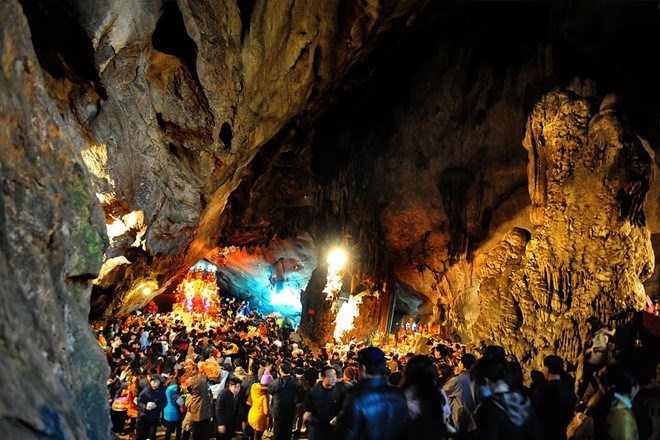 |
Huong Tich Cave is at the center of Chua Huong (Perfume Pagoda), a vast complex of Buddhist temples and shrines built into the limestone Huong Tich mountains in Hanoi’s My Duc District, around 70 km southwest of the city center.
The mouth of the cave has the appearance of an open dragon’s mouth with Chinese characters carved in a wall at the mouth.
The characters translate into “first-grade cave of the Southern World” (Southern World refers to Vietnam) and the carving is dated to 1770. The words are attributed to the ruler of that time, King Trinh Sam.
Inside the cave are many statues, including a large one of Guanyin, an East Asian deity of mercy and a bodhisattva associated with compassion as venerated by Mahayana Buddhists, made of green stone.
2. Tam Coc - Bich Dong
Tam Coc-Bich Dong in the northern province of Ninh Binh is dubbed “the inland Ha Long Bay”.
The name “Tam Coc” refers to three caves – Ca (first), Hai (second), and Ba (third) that were created by the passage of the Ngo Dong River through limestone mountains. The caves, which are as long as 127 meters and as high as two meters, can be explored by boat.
Starting at a wharf in Van Lam village, Ninh Hai Commune, the two-hour trip takes tourists along the river and through the caves.
3. Dau Go Cave
Dau Go (Wooden Stakes) Cave is the largest grotto in Ha Long Bay in Quang Ninh Province.
Named Grotte des merveilles or Cave of Marvels by the French in the late 19th century, the cave, comprising three chambers, is full of strangely shaped stalactites and stalagmites.
The wooden bars in this cave are the remnants of sharp wooden columns installed under the water level on the orders of Commander Tran Hung Dao to sink Mongolian invaders' ships in the 13th century.
Thien Cung (Heaven Palace) Cave is located on the north of Dau Go Island in Ha Long Bay. It is one of the most beautiful grottoes in Ha Long Bay.
The entrance to the cave is narrow, but visitors will be surprised by the large space inside the cave when they step in.
Phong Nha is a cave in the Phong Nha-Ke Bang National Park, a UNESCO world heritage Site in the central province of Quang Binh.
It is 7,729 meters long and contains 14 grottoes as well as a 13,969-meter underground river. It contains numerous fascinating rock formations.
Thach Dong Cave is in My Duc Commune, Ha Tien town, Kien Giang Province.
The cave is part of Thach Dong Mountain, a giant rock that stands alone, rising to 90 meters.
Thach Dong Cave has two main entrances. Inside the cave is a wooden pagoda named Tien Son built in 1790.
The mouth of Son Doong was first discovered by Ho Khanh, a resident of Son Trach Commune, Bo Trach District, in 1991. In 2009 he acted as a guide for an expedition by the British Cave Research Association led by Howard Limbert and his wife Deb.
That year the cave became known worldwide after being identified as the world's largest.
The five-kilometer-long cave, which is 150 meters high and 200 meters wide, has at least 150 individual caves, a dense subterranean jungle and several underground rivers.
The mouth of the cave has the appearance of an open dragon’s mouth with Chinese characters carved in a wall at the mouth.
The characters translate into “first-grade cave of the Southern World” (Southern World refers to Vietnam) and the carving is dated to 1770. The words are attributed to the ruler of that time, King Trinh Sam.
Inside the cave are many statues, including a large one of Guanyin, an East Asian deity of mercy and a bodhisattva associated with compassion as venerated by Mahayana Buddhists, made of green stone.
Among the naturally occurring features of the cave are thousands of stalactites and stalagmites.
2. Tam Coc - Bich Dong
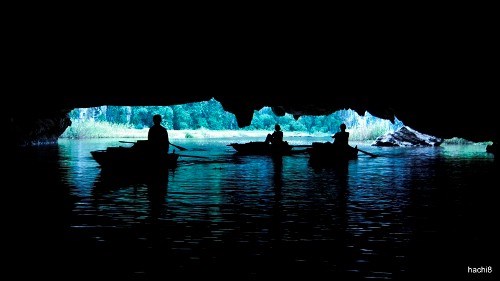 |
The name “Tam Coc” refers to three caves – Ca (first), Hai (second), and Ba (third) that were created by the passage of the Ngo Dong River through limestone mountains. The caves, which are as long as 127 meters and as high as two meters, can be explored by boat.
Starting at a wharf in Van Lam village, Ninh Hai Commune, the two-hour trip takes tourists along the river and through the caves.
Bich Dong is a pagoda on nearby Ngu Nhac Mountain built in 1428 and comprising three structures: Ha, Trung, and Thuong Pagodas, in ascending order.
3. Dau Go Cave
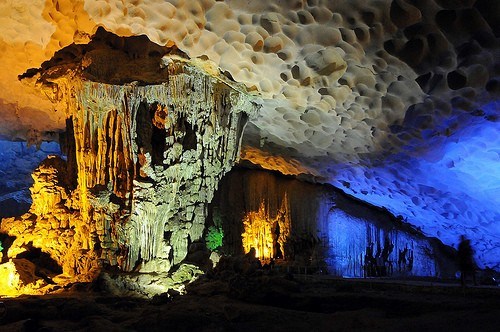 |
Named Grotte des merveilles or Cave of Marvels by the French in the late 19th century, the cave, comprising three chambers, is full of strangely shaped stalactites and stalagmites.
The wooden bars in this cave are the remnants of sharp wooden columns installed under the water level on the orders of Commander Tran Hung Dao to sink Mongolian invaders' ships in the 13th century.
4. Thien Cung Cave
 |
The entrance to the cave is narrow, but visitors will be surprised by the large space inside the cave when they step in.
The cave is filled with stalactites and stalagmites. On the east wall of the grotto is a grand and imposing picture with characters from fairy tales.
5. Phong Nha Cave
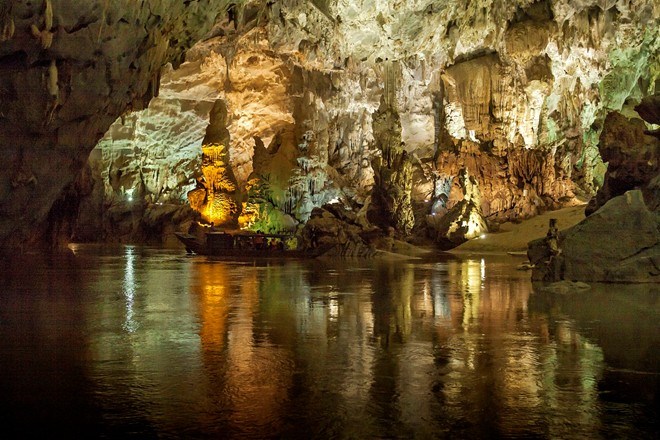 |
It is 7,729 meters long and contains 14 grottoes as well as a 13,969-meter underground river. It contains numerous fascinating rock formations.
6. Thach Dong Cave
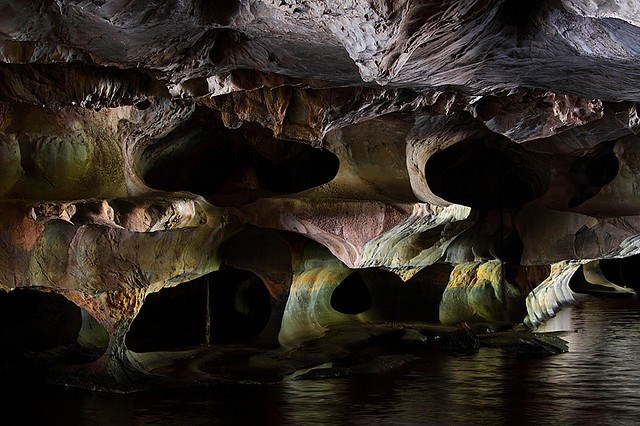 |
The cave is part of Thach Dong Mountain, a giant rock that stands alone, rising to 90 meters.
Thach Dong Cave has two main entrances. Inside the cave is a wooden pagoda named Tien Son built in 1790.
The cave is famous partly because of a fairy tale about Thach Sanh, a hero who saves a princess held in the cave by an ogre.
7. Son Doong Cave
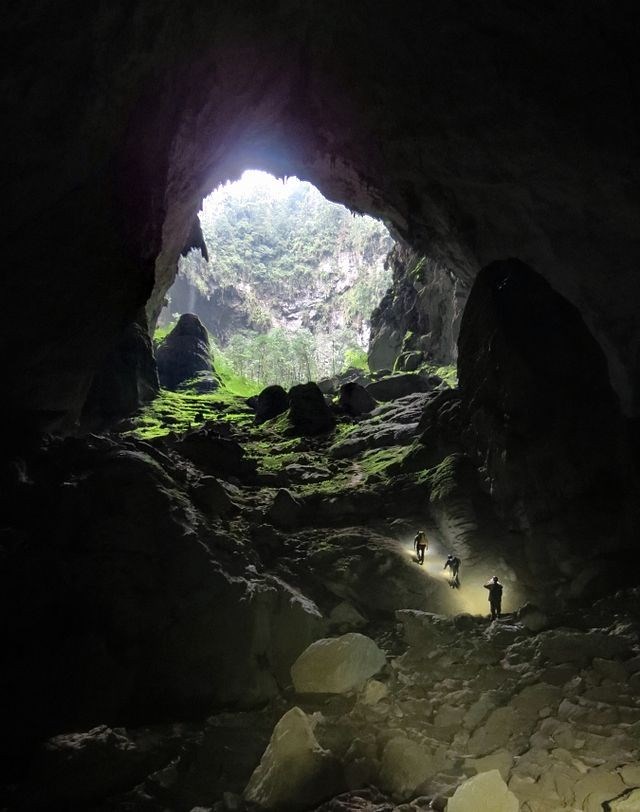 |
Son Doong Cave is located in the UNESCO-recognized Phong Nha-Ke Bang National Park in Quang Binh Province.
The mouth of Son Doong was first discovered by Ho Khanh, a resident of Son Trach Commune, Bo Trach District, in 1991. In 2009 he acted as a guide for an expedition by the British Cave Research Association led by Howard Limbert and his wife Deb.
That year the cave became known worldwide after being identified as the world's largest.
The five-kilometer-long cave, which is 150 meters high and 200 meters wide, has at least 150 individual caves, a dense subterranean jungle and several underground rivers.
